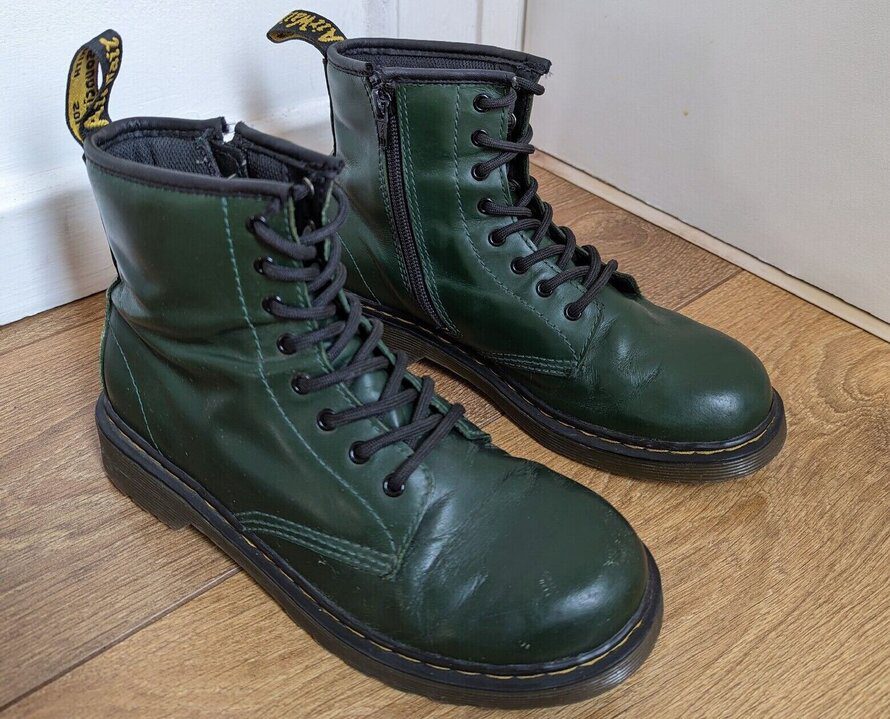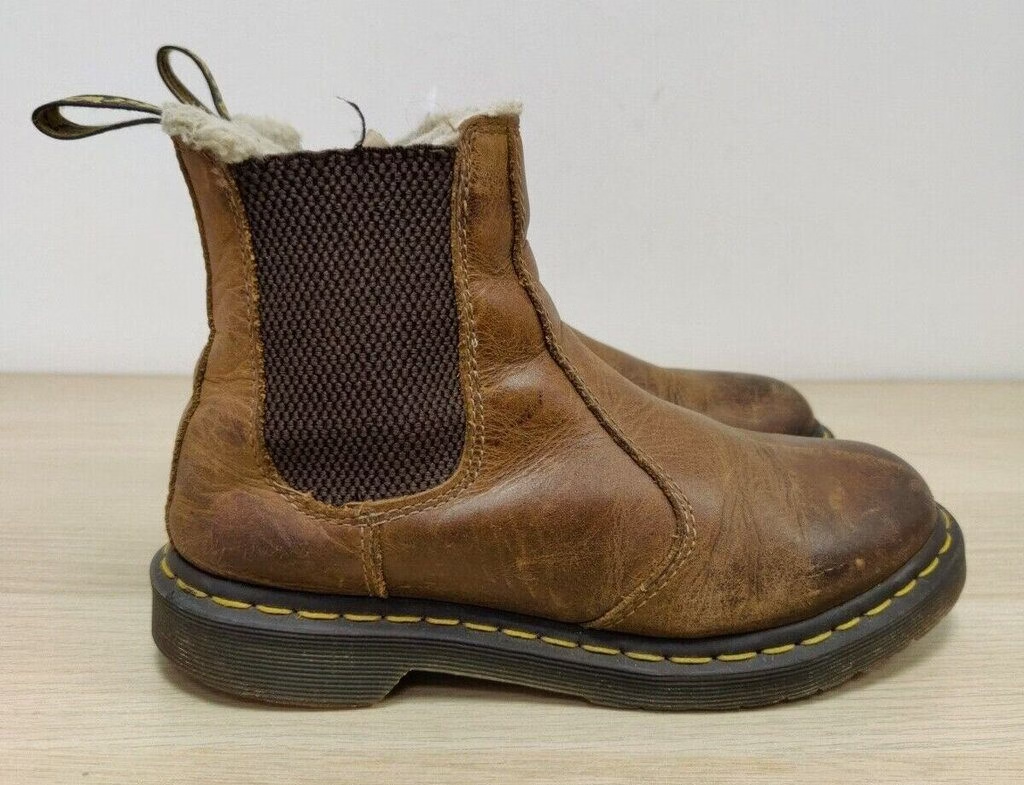While Doc Martens are durable, they’re not ideal for serious hiking, especially on tough terrain. Their stiffness and weight can cause discomfort on long hikes or uneven surfaces. Some models may work for light, casual walks, but they lack the specialized support, waterproofing, and breathability found in hiking boots.
Doc Martens used to be worn for tough jobs, gardening, and cool urban looks. Now, folks usually don’t see them as outdoor gear. Most people prefer traditional hiking boots instead.
However, Doc Marten boots were originally designed to be used solely as field boots. That said, there are some features that the Doc Martens share with a proper hiking boot that makes them ideal for some hikes, such as the leather uppers.
So, are Doc Martens good for trail hiking? Below, we’ll take a closer look at this brand and some associated footwear, and find out whether or not these are really trail-worthy products.
What are Doc Marten Boots?

Doc Martens are leather boots that were manufactured in the 1940s as a way to make working more comfortable for the feet.
The very first product, the Doc Marten 1460, was designed with an air-cushioned rubber sole, a smooth leather upper, yellow stitching around the boot, and a high ankle collar that extends to the lower portion of the calf.
The 1460 is an important model to take note of not only because it’s the very first Doc Marten product, but because it serves as the template for every other boot in the brand’s line of footwear.
Can you Hike in Doc Martens?
Dr. Martens can be worn for casual hiking, but they’re not ideal for tough trails or long hikes. They lack the support, cushioning, and breathability found in hiking boots. However, for short, light hikes or as an alternative to walking shoes, they can work, especially if properly broken-in and waterproofed.
Since these shoes were made for urban wear, they have nearly no features that would make them reliable on dry or slippery rocks, stepping over branches, or even climbing.
Additionally, their weight makes them a little heavier than regular hiking shoes. On average, a pair of size 9 Doc Martens weighs around 3 lbs. This is significant compared to the Salomon X Ultra 4 Mid GTX, a shoe that weighs 1lb. 14. oz. at the same size.
This is even more eye-opening when you remember that the X Ultra 4 is made specifically for hiking while boasting even more features.
Check our Ultimate Footwear Guide to explore all available footwear options.
What are the Most Popular Doc Martens Hiking Boots?
Dr. Martens 2976 Chelsea Boots

Dr. Martens 2976 Chelsea boots are sleek footwear designed with durable leather and elastic gussets.
Even though the uppers have a soft sheen, they’re still a little stiff, which gives a brand new pair of 2976 Chelsea boots a bit of a break-in time before the leather starts to move naturally with your foot.
However, since the ankle collar stretches so well, the 2976 Chelsea boots are easy to slip on and off.
Not only is the leather sewn together with a single seam, but the sole is also sealed with heat treatment, making the boots more resistant to premature wear and tear.
Overall, these boots are reliable in casual settings, despite their rigid build.
Dr. Martens Smooth Leather Jadon Platform Boots

The Dr. Martens Smooth Leather Jadon Platform is a footwear made with an 8-eye silhouette and 2-inch platforms.
Like all Dr. Marten products, it retains the signature yellow stitching and heel loop.
The Jadon Platform also has the original air-cushioned sole, which is squishy enough to provide comfort for the feet when standing for long periods.
The smooth leather gives the boots a polished look, adding style to nearly all appearances.
Like the 2976 Chelsea Boots, these fit more in urban settings than they do in outdoor settings, but can still handle traveling on flat trails.
Advantages of Using Doc Martens Boots for Hiking
Traction

Doc Martens have a soft rubber outsole to manage wet and oily surfaces, like what you’d encounter in a working factory.
As far as hiking goes, these would do fairly well in dry climates, but even more so in rainy conditions thanks to the slip-resistant tread.
Durability
Doc Martens are built sturdy and strong enough to endure tough work environments. Their leather resists scuffs and maintains the boot’s quality while also safeguarding the feet.
This characteristic could extend the wear of Doc Martens on certain trails.
Although there might be some benefits to hiking in Doc Martens, it’s generally not advisable to use them for lengthy walks.
Disadvantages of Using Doc Martens Boots for Hiking
Breathability

The leather uppers Doc Martens are made with aren’t well-ventilated like regular hiking boots.
Most people aren’t wearing Doc Martens long enough to have sweat and overheating become a problem.
However, if worn on a hiking trail and used for a couple of hours, it will become apparent how little ventilation these boots actually have.
Weight
When wearing these boots as a stylish complement to an outfit, the weight may not be much of a problem. However, as mentioned previously, Doc Martens on average weigh close to 3 lbs a pair. Good hiking boots, hiking shoes, and trail running shoes are half that weight.
If you try to wear Doc Martens on a hiking trail, you’ll have too much bulk pulling on your legs and feet. This is worsened by the fact that Dr. Martens don’t have any stabilizing features or soft padding to compensate.
Comfort
While Doc Martens have an air-cushioned sole, which makes them comfortable to stand in without causing too much discomfort, the smooth leather is incredibly stiff. As we indicated before, there’s a significant break-in period for this brand’s boots.
Consequently, this rigidness makes the boot inflexible, which is a significant issue when on a trail that requires your hiking footwear to bend to your movements. This also means that it’s easier for you to end up with pain and blistering if they’re worn for too long.
Do We Recommend Doc Martens for Hiking?
In the end, no, we do not recommend hiking in Doc Martens. While Doc Martens are high-quality boots, they’re not made for the outdoors. The tough leather does a good job of protecting your feet from foreign objects, but that’s all about it.
However, if you have to hike in Doc Marterns, make sure you use some thick socks made out of breathable fabric.
Even after they’ve been broken in and the leather feels more comfortable, they just don’t have the cushioning, weatherproofing, and stability necessary to navigate rugged terrain or rocky terrain. These are footwear designed exclusively for fashion and utility in urban settings.
FAQs
Doc Martens are generally not good for hiking in the snow. The traction on the sole isn’t grippy enough to manage conditions like that, nor is the leather waterproof enough to seal out that much moisture.
Doc Marten boots are comfortable enough to walk around in on flatlands and city streets. The stiff leather uppers begin to make them uncomfortable to wear after prolonged use.
Doc Marten boots are strong. Since they were originally designed for factory workers to withstand harsh work conditions, these boots don’t damage easily. The leather can be scuffed and scraped without significantly reducing the boots’ lifespan.
Yes, Doc Martens can be excellent work shoes, especially for indoor jobs or roles not requiring heavy-duty safety features. They’re known for their durability, slip resistance, and comfortable, air-cushioned soles. However, they might not be suitable for all work environments, particularly those that involve hazardous conditions or require specific safety certifications.







